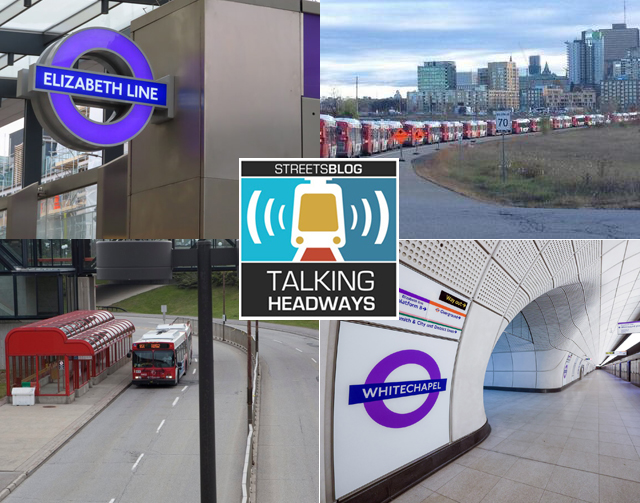Reece Martin, who discusses transit systems around the world on his YouTube channel RMTransit, takes us on an audio tour of Canadian Transit and discusses his recent visit to London to ride the Elizabeth Line.
Jeff Wood: Ottawa is such an interesting place that they are replacing [BRT], which is interesting. And then they had a little bit of controversy. Can you, can you dive into that a little bit about what was going on in Ottawa?
Reece Martin: Ottawa's system is really interesting. So they basically had this set of BRT corridors called the Transit Way, which still mostly intact across the city. The issue was that the central part of the BRT system basically cut across the downtown on the surface. And when there was an issue, I mean, you would have a line of buses, like hundreds of buses blocking off the downtown completely. So, at some point, this had just happened enough times that they realized they had to do something about it. They built a new light-rail system, which is more of a kind of light metro; there’s no street crossings or street running or anything like that, that takes over the core part of the transit way they basically took the bus stations, upgraded them a little put rails in built a new tunnel through the downtown and opened this thing up.
The issue is that, at least initially, you still had these massive throes of buses pulling into the stations on the edges of this rail line, which is not that long, at least right now, and dropping off just tons of passengers. And that was in particular creating a lot of issues with the trains, which aren’t really designed to have that many passengers dumped on them at one station. That, in particular, led to a lot of issues technically and stuff, but the project is a public-private partnership. There’s been some poor execution of some of the elements of the project that needed to be rectified: electrical systems not properly put together and trains not maintained properly.
It seems like that stuff is getting fixed, but it certainly had a really bad toll on the perception of Ottawa’s public transit. It really shows that if you have a transit system and you’re doing a big project like this, you have to execute it well. Because, if you don’t, you could destroy your transit system's reputation, which in Canada, since the transit systems generally do ride on their reputation quite a bit, it’s really important that the reputation stays really high.
Wood: Is it possible for them to get it back? With expansions or with the fixes, you said they’re starting to fix things, but is it possible?
Martin: I definitely think it’s possible. Ottawa is the city where there’s a lot of people moving to and from it; it’s got quite a dynamic economy, and obviously it’s where the government’s located. There’s a decent turnover of people moving in and out all the time. They are working on a 50-kilometer, (30-something-mile) expansion of the rail network right now, which will alleviate some of that congestion at the ends. So I think there’s lots of opportunity to fix things.
One of the best times you can kind of change the public’s perception around a transit system is when you open a big, new expansion. So Crossrail is a good example of that, but so it could be Ottawa's big expansion. I think it’s a good time to change some of your branding and change your public messaging and try to push for some increase ridership. So, yeah, I think they can sort it out, but it’s something that should probably have been avoided in the first place.






